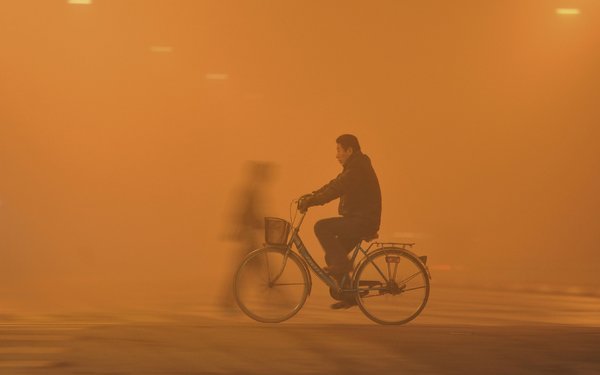
Ahead of climate change negotiations in Paris, the Chinese government has released its latest scientific assessment of how global warming has affected and is likely to affect China. The 900-page “Third National Climate Change Assessment Report” is the work of some 550 scientists and experts, summing up the advancing knowledge of the environmental consequences of rising greenhouse gas levels.
Here are the report’s main findings on how China’s environment will feel the effects of global warming:
RISING TEMPERATURES
Average temperatures across China have been rising faster than the global average, and that trend is likely to continue, the report says. From 1909 to 2011, average temperatures across China rose between 0.9 and 1.5 degrees Celsius (1.6 and 2.7 Fahrenheit). Governments have set a goal of trying to limit future temperature rises in this century to within 2 degrees Celsius (3.6 Fahrenheit) above the pre-industrial average. But even if that global goal is met, temperature rises across China will be substantially higher: 2.7 to 2.9 degrees Celsius (4.9 to 5.2 Fahrenheit), the report says.
PRECIPITATION AND WATER
Although global warming sometimes conjures images of parched deserts, the consequences for rain and snowfall across China are more complicated, as they are for many other parts of the world. Warmer air absorbs more moisture that, sooner or later, is released as precipitation. The effects on precipitation across China are likely to vary widely, and scientists are still working on finer-grained models of likely change. In parts of northern, northwestern and southern China, rain and snowfall have decreased in recent decades, while in other regions, especially out west, precipitation has increased.
Over this century, the report says, China’s total precipitation could increase 2 percent to 5 percent. But increased evaporation due to higher temperatures can mean that soil and waterways retain less of that water. “Over all, climate change may further intensify the occurrence of floods and droughts,” the report says. “This will pose even more severe challenges for management of water resources.”
AGRICULTURE
World leaders met in Paris to discuss plans to combat global climate change. Meanwhile, air pollution levels in Beijing and New Delhi were much higher than acceptable.
The Chinese government has made national food self-sufficiency a priority, fearing that reliance on foreign markets could make the country economically and politically vulnerable. So there is a great deal of research in China on the effects of global warming on agriculture, but also considerable uncertainty. Warmer weather could extend the growing season for some crops, especially in northeast China. But farmers will also have to cope with increased pests, less reliable rain and irrigation, and hotter summers.
Over all, climate change will cause earlier and shorter growing seasons, a proliferation of diseases and pests, and intensifying hazards. That does not mean that China will inevitably face famine, the report stresses, but adaptation in crop varieties and in farming and irrigation technology will be needed to cope with these stresses.
HIGHER SEA LEVELS
Across the planet, sea levels have been rising because of melting polar caps and the accumulated heat that is expanding oceans. But the effects are not uniform. Some parts of the planet experience higher rises than others, reflecting the effects of ocean currents, winds and the gravitational influence of polar ice masses. And China, the report says, is in a part of the world where sea level rises have been relatively high and are likely to remain that way. From 1980 to 2012, China’s coastal seas rose an average of 2.9 millimeters, or 0.11 inch, a year, higher than the global average. Forecasting how fast future rises will be is difficult, partly because much rests on the future of the polar ice sheets.
In the next 30 years, the East China Sea off Shanghai could rise between 7.5 and 14.5 centimeters, or 3 and 5.7 inches. The rises will force back the coastline and expose low-lying areas to worse damage from storms and typhoons, which whip up surges of water, as well as inundations of saltwater into waterways and farmland. Each rise of one centimeter in sea level could push the coastline back more than 10 meters, or 32.8 feet, the report says. It calls for much greater investment in sea walls and other protections.